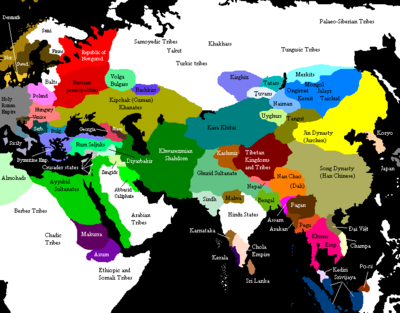Blood Pressure and the Seasons

High blood pressure may be more difficult to control in winter, according to research reported to the American Heart Association, at its meeting in Orlando last week.
A five-year study by a team from the United States found Department of Veterans Affairs analyzed data on 443,632 veterans treated for hypertension at 15 VA hospitals in cities throughout the US found that blood pressures during the summer were on average 7.76% lower than during the winter. The researchers found the same pattern emerged from each hospital they studied, regardless of whether it was based in a warm or cold climate, in locations that ranged from Anchorage, Alaska to San Juan, Puerto Rico.
This is an intriguing finding, and there are a load of potential explanations for it:
A more active summer lifestyle may be the key
It is also possible that people might eat more salty foods in winter, and salt is strongly linked to raised blood pressure
There may also be a link with sunlight. Which can trigger a number of metabolic changes
But I also need to sound a note of caution: blood pressure changes all the time throughout the day. Although the study was all done correctly, it is important to realize that many subtle variations in blood pressure could be lurking within the data.
Nonetheless, people should be aware of the possibility that their blood pressure may be harder to control in the winter, and to be more vigilant at this time.
“For everything there is a season, And a time for every matter under heaven: A time to be born, and a time to die; A time to plant, and a time to pluck up what is planted; A time to kill, and a time to heal; A time to break down, and a time to build up; A time to weep, and a time to laugh; A time to mourn, and a time to dance; A time to throw away stones, and a time to gather stones together; A time to embrace, And a time to refrain from embracing; A time to seek, and a time to lose; A time to keep, and a time to throw away; A time to tear, and a time to sew; A time to keep silence, and a time to speak; A time to love, and a time to hate, A time for war, and a time for peace.”
–The Bible, Ecclesiastes, 3:1-8
“Each new season grows from the leftovers from the past. That is the essence of change, and change is the basic law.”
–Hal Borland (American Writer, 1900-1978)
“Live in each season as it passes; breathe the air, drink the drink, taste the fruit, and resign yourself to the influences of each. Let them be your only diet drink and botanical medicines.”
–Henry David Thoreau (American Essayist and Philosopher, 1817-1862)
Global Warming May Be Fatal
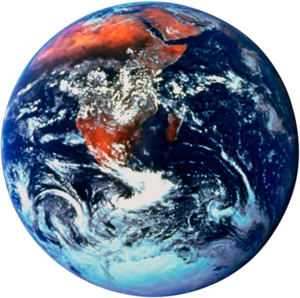
There are several reasons for being concerned about climate change. One is that global warming may cause significant changes in patterns of disease.
An analysis published last month in Occupational and Environment Medicine found that global warming will cause more deaths in summer because of higher temperatures but these will not be offset by fewer deaths in milder winters
The Harvard researchers analyzed city-specific weather data related to the deaths of more than 6.5 million people in 50 US cities between 1989 and 2000.
They found that during two-day cold snaps there was a 1.59% increase in deaths because of the extreme temperatures. However, during similar periods of extremely hot weather death rates went up by 5.74%. An important point is that deaths did not rise as steeply when temperature fluctuations were less extreme.
Deaths from all causes are known to rise when temperatures go up while heart attacks and cardiac arrests are more likely when it is very cold. It was anticipated that global warming would increase deaths during hot temperatures but that this would be compensated for by fewer deaths in the winter.
The authors conclude:
“Our findings suggest that decreases in cold weather as a result of global warming are unlikely to result in decreases in cold-related mortality in the US. Heat-related mortality, in contrast, may increase, particularly if global warming is associated with increased variance of summer temperature.”
While all 50 US cities showed similar rises in deaths when temperatures plummeted, more deaths were seen during extreme temperature rises in cities with milder summers, less air conditioning and higher population density.
The authors suggest that this is because the use of central heating is widespread, whereas fewer people have air-conditioning in their homes.
They said:
“Central heating, which constitutes an important adaptive mechanism against cold, is almost universal in the US and this may explain why the US population seemed fully acclimatized to cold.
Making air conditioning universally available may reduce heat-related mortality but would, on the other hand, have a perverse effect by enhancing global warming through carbon dioxide emissions from electricity consumption.”
This advice is very sound.
There are two other points. First, it is sudden changes in temperature that cause the problems: we are quite god at acclimatizing to extremes. But if global warming brings with it more instability in the climate then we will likely see much more of a problem.
Second, and something that is often missed by the naysayers about global warming, is that most of us no longer have a luxury enjoyed by our ancestors: When they endured ice ages and periods of warming, they could simply migrate to a more congenial region.
Most of us are stuck where we are, and that’s the big problem when we think about the health consequences of environmental change.
Earth Day
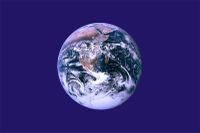
Today is Earth Day. I am sure that everyone living on the planet is eager to keep it a decent place to live, and the recent flurry of gloomy reports has energized people in a way that I have not seen in decades.
Yes, there are plenty of nay sayers who point to the ice core date and say that there’s not a problem, but that band is shrinking as quickly as the Arctic Ice. Information from the Lake Vostok ice core analysis has provided data going back 420,000 years, during which there have been four temperature peaks before the current one, all comparable to today’s temperature levels. The causes for those peaks are poorly understood, but I am more and more persuaded that something profound is going on with the planet’s weather, and we really have only three choices:
- Prevent, which may be too late
- Adapt
- Mitigate
On April sixth, scientists and officials from more than 100 governments met in Brussels and agreed that Climate change is already under way and the Earth faces water shortages and famines in the poorest countries, plus huge floods and species extinctions if no action is taken to slow it down.
There was an unprecedented consensus on the mounting threat
posed by global warming, and the final report was unanimously approved, even by the United
States, China and Saudi Arabia. The officials from these countries had spent four days and
two nights challenging the more dire predictions line by line.
The
report by the Intergovernmental Panel on Climate Change (IPCC) warns that
global warming will hit hardest in the Arctic, sub-Saharan Africa, on
small islands and highly populated river deltas in Asia.
For example it predicts that 600 million more people could suffer from
droughts in Africa and billions will face risks from coastal flooding
by the end of this century.
And if that seems to far away to be of immediate concern, the report also makes a number of remarkably precise near-term predictions. The 21-page
“policymakers summary” of a full report to be published later this year,
charts the impact of temperature rise over the past 30 years and
calculates the implications of the rise of about 3 degrees Celsius by the end of this
century forecast by another IPCC panel in January.
Rajendra
Pachauri, the chairman of the panel, said: “It’s the poorest of the
poor in the world, and this includes poor people even in prosperous
societies, who are going to be the worst hit. This does become a global
responsibility in my view.”
Professor Martin Parry, who was co-chair of the panel’s working group on climate change
impacts, said evidence of changes already taking place that could be
attributable to human influence had been found in 29,000 sets of data.
He said, “For the first time we are not just arm-waving with models.”
Professor
Parry said actions to adapt to climate change, such as sea defences and
new forms of agriculture, should take priority over efforts to reduce
greenhouse gases, which would take years to have any impact. He went on to say,
“In the near term, adaptation is vital. The sooner we get on with that
the better.” Dr Pachauri revealed that the process had been a “complex
exercise”.
Many scientists objected to what they saw as an unprecedented level of
interference from government officials in arriving at what is meant to
be a scientific summary.
Professor Parry added that: “I don’t think it is the right thing to say the message was watered down.” Though he conceded that the scientific team made some compromises in their final report. As an example he revealed that a graph showing that billions would be at risk of coastal flooding by 2080 was changed to read “millions”.
Joseph
Alcamo, who is an American-born professor of environmental science and
engineering at the University of Kassel in Germany, said: “I question why
it needs to be such a difficult fight to get the science out there.
Scientists have to play a role we are not really trained for. It is a
dilemma for us.” Professor Alcamo chaired the working group studying changes
in Europe. He reproted that he had appeared on the podium to confront
skeptical governmental delegations at 2am, after some objected to his use of the term “unprecedented” to describe the heatwave in Europe in 2003 which claimed up to 35,000 lives.
For the first time, the scientists broke down their
predictions into regions, and forecast that climate change will affect
billions of people.
Africa will be hardest hit. By 2020, up to 250 million people are likely to be exposed to water shortages.
According to the report, in some countries, food production could fall by half.
North
America will experience more severe storms with human and economic
loss, and cultural and social disruptions. It can expect more
hurricanes, floods, droughts, heatwaves and wildfires, it said.
Northern Europe will at first experience some benefits, such as a
reduced demand for heating, but southern Europe will face more
heatwaves and drought, with a reduction in crop productivity.
Parts
of Asia are threatened with widespread flooding and avalanches from
melting Himalayan glaciers. Europe also will see its Alpine glaciers
disappear.
These were the Key Points from the report:
- There is clear evidence that from all continents that climate change is happening now
- The key “tipping points” are in the Arctic, small islands, sub-Saharan Africa and Asian “mega-deltas.”
- Coastal flooding threatens “bilions” of people in low-lying delta regions with high population growth
- In Asia, climate change could put close to 50 million people at risk of hunger by 2020, with that number rising to 132 million by 2050 and to 266 million by 2080
- By 2080, between 1.1 billion and 3.2 billion people
will face water shortages, and between 200 million and 600 million will
face extreme hunger. - Up to 30 per cent of animal species face displacement or extinction with average warming of 2 degrees C.
- If temperatures rise more than 3C, sea level rise threatens a third of coastal wetlands.
- Cereal productivity will drop globally with a rise of between 1 degree C and 2 degrees C – which could happen by 2050.
- Some impacts are already unavoidable due to past emissions
There remain some disagreements:
- The United States, China, Russia and Saudi Arabia objected to the
statement that there is “very high confidence” that climate change is
impacting on “many natural systems, on all continents and in some
oceans”. - The United States objected to the statement that North America could suffer “severe economic damage” from warming.
- The United States
led objections to the statement that European heatwave of 2003, which
killed more than 20,000, was “unprecedented” but was routed by
scientists. - Billions affected by sea level rise changed in some places to millions.
- One
illustration full of specific numbers – that up to 600 million more
people in Africa were having difficulty finding water, and that 5,000
more heat-related deaths in Australia followed a 2 degree C temperature rise –
was dropped after skeptical governments, including the United States, objected.
The publication of this report coincided with another published in the journal Current Biology
showing that more than half of the tropical coral reefs in the world are being degraded beyond repair. And 30 million people depend entirely on coral reefs for their income and for their food
This report also address the effects of climate change on disease and the threat that it will provoke wars over scarce resources. Those may be dealt with in more detail later in the year.
You may be interested to look at a projected timeline for some of these likely changes.
Despite these gloomy predictions, there is some cause for optimism: even if some were dragged in kicking and screaming, this is the first time that so many countries have agreed about ANYTHING. And secondly, the imminence of these changes hsould stimulate not just conservation and technological innovation, but a greater understanding that we cannot continue to live as we have done in the past: the planet is a great deal more fragile than our economies.
Air Pollution and Cardiovascular Disease
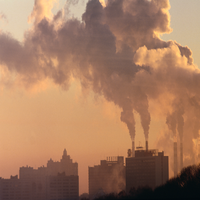
There a very important piece of research published in this week’s issue of the prestigious New England Journal of Medicine, indicating that air pollution increases the risk of cardiovascular disease, at least in women. The whole article is available for free download.
Researchers from the University of Washington studied 65,893 postmenopausal women without previous cardiovascular disease in 36 U.S. metropolitan areas from 1994 to 1998, with a median follow-up of 6 years. All the participants were aged 50 to 79 and part of the Women’s Health Initiative, a major US Government funded investigation into the causes of heart disease in women. A total of 1,816 women suffered one or more cardiovascular event.
The investigators were particularly interested in tiny airborne particles called particulates, which are less than 2.5 microns across, and can lodge in the lungs. Previous research had incriminated them in heart disease. These are the dense clouds that you see coming out of chimneys or exhaust pipes. They found that pollution levels varied between four to nearly 20 micrograms per cubic meter.
Each 10 microgram rise was matched by a 76% rise in the chances of dying from heart disease or stroke. For women living within, rather than between, cities, the risk more than doubled, increasing by 128%, with each step up in pollution levels.
It is not clear whether women are more susceptible to pollution than men. Women’s coronary arteries are smaller and this might render them more vulnerable.
These results suggest that the risk from air pollution is far greater than most doctors previously thought, though it is still not clear how these sooty particles lead to the development of heart disease.
I live just outside a city where we often have smog advisories for weeks at a time in the summer. This research adds to the growing evidence that air pollution should be taken seriously as a risk factor for cardiovascular disease.
That also means that when localized air pollution is particularly high, people with chronic lung disease or coronary heart disease should avoid staying outside.
This problem will likely get worse as the summers be progressively warmer.
Yet another reason for taking climate change seriously.
“For the first time in the history of the world, every human being is now subjected to contact with dangerous chemicals, from the moment of conception until death.”
–Rachel Carson (American Biologist and Writer, 1907-1964)
The Latest Report on Climate Change
As expected the Intergovernmental Panel on Climate Change (IPCC) concludes that there is more than a 90% chance that global warming has a human cause. The panel said that temperatures were probably going to increase by 1.8-4 degrees Celsius (3.2-7.2 degrees Fahrenheit) by the end of the century. It also projected that sea levels were most likely to rise by 28-43cm, and global warming was likely to influence the intensity of tropical storms.
The findings are the first of four IPCC reports to be published this year.
Also as expected, the attacks on the report began even before it was published. Some radio critics have committed a fundamental mistake of saying that people have been warning of this for years and nothing has happened. First, something has happened, and second, the report is careful to say that precise estimates are difficult. It is the direction of change which should be of greatest importance.
The Mail and Guardian Online is reporting that some scientists and economists have been offered $10 000 each by a lobby group funded by one of the world’s largest oil companies – ExxonMobil – to undermine the report.
There is also a very well reasoned article about the semantics of climate change. The precise language of science and the quite different way in which politicians and many marketing people use language. It is well worth reading.
My main concern remains the impact of climate change on health and well-being. And many parts of the world, from Florida to the Horn of Africa are already experiencing that.
The Red Tide
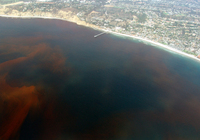
There is an important report about the impact of environmental change in this month’s issue of the journal Chest.
Red tide is a common name for a phenomenon known as an algal bloom,
a well known event in which marine algae accumulate rapidly in the
water column, or “bloom”. These algae, more correctly termed phytoplankton, are microscopic, single-celled, plant-like organisms that can form dense, visible patches near the water’s surface. We know that red tides have been occuring in the Gulf of Mexico for centuries, but they appear to be spreading and to be becoming more common and severe.
The main type of plankton is a species of dinoflagellate known as Karenia brevis, that is concentrated along shorelines and produce highly potent aerosolized toxins. The new research shows that Florida red tide toxins – called brevetoxins can impact respiratory function and increase respiratory symptoms in patients with asthma.
In otherwise healthy people inhaled aerosolized red tide toxins can lead to eye irritation, runny nose, postnasal drip, nonproductive cough, and wheezing. The symptoms usually subside after leaving beach areas. But things can be far more serious for people with asthma, who may experience respiratory problems and decreased lung function after just one hour of beach exposure to the toxins.
This was a fine piece of research funded by the National Institute of Environmental Health Sciences, and makes it clear that not only that asthma sufferers need to be aware of this potential source of trouble but that we all need to be alert to the possibility that human activities are increasing the red tide and with it, the risk of further health problems.
The Sixth Extinction
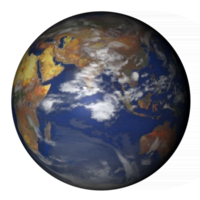
“Once we spread out into space and establish colonies, our future should be safe.”
— English Theoretical Physicist and Lucasian Professor of Mathematics at the University of Cambridge, 1942-
Five times before the world has almost died. Many experts believe that we are now in the Sixth Extinction. More accurately known as the Holocene extinction event, it refers to the widespread, ongoing mass extinction of species during the modern Holocene epoch that began 10,000 years ago, at the end of the last Ice Age.
The previous ones were all a very long time ago, and were probably caused by cosmic events:
- 444 million years ago: the End Ordovician
- 360 million years ago: the Late Devonian
- 251 million years ago: the Permian-Triassic transition
- 200 million years ago: the End Triassic
- 65 million years ago: the End Cretaceous (this is the one that you probably learned about in school: it was the one that is thought to have ended the reign of the dinosaurs)
The reason that so many people are becoming more conservationist in their outlook is that the observed rate of extinction has accelerated dramatically in the last 50 years to a pace that is greater than the rate seen during the Big Five extinctions.
Unlike the previous extinctions that were likely caused by astronomical events, most experts attribute the sixth extinction directly to human activities. So they can be a good barometer of where we are going wrong with the world. Since 1500 AD, 698 extinctions have been documented by the International Union for Conservation of Nature and Natural Resources.
In the United Kingdom, the publication of the Stern Report that outlined the frightful impact not of extinctions but of global climate change, was endorsed by the current Prime Minister, Tony Blair. He endorsed it not out of the goodness of his heart, but because the report demonstrated the impact not just on people but on the economy. It seems a shame that it takes money to persuade some people in high places to do the right thing. Naturally the Stern report has had more than its fair share of criticisms. But the fact that more people in politics and industry are talking about global climate change and the impact of our activities on people and on many other species is obviously a good thing.
However I think that the real change in how we live with the earth lies not simply in understanding the impact on our bottom line, but in our own level of development. Rather tha following Stephen Hawking’s advice and heading off into space, we need to get ourselves in order, unless we want to take all the behaviors that have caused this catastophe with us.
In recent years I have been persuaded by the spiral dynamics model. As more people embrace the Green, Yellow and Turquoise Memes they understand not just intellectually, but viscerally, the importance of preserving the planet and terminating the headlong rush toward the sixth extinction. Ken Wilber has written eloquently about the downside of what he calls the “Mean Green Meme.” But once enough of us make the jump to second-tier thinking there are no longer these mean downsides. Just a constant desire, need even, to nurture and preserve the planet.
One of the reasons for my efforts to assist your personal growth and development is that neither health nor illnesses exist in isolation. They are born from and affect everyone in the individual’s social group, and their resolution requires the cooperation of everyone in the group. And that social group includes the planet and all the creatures around us.
I have been asked to start sharing yet more of the practical techniques that have helped thousands of students over the last 30+ years, so I am going to start creating a new set of podcasts to help anyone who would like them.
“By 2050, at bio-extinction’s current rate, between 25 per cent and 50 per cent of all species will have disappeared or be too few in numbers to survive. There’ll be a few over-visited parks, the coral reefs will be beaten up, grasslands overgrazed. Vast areas of the tropics that have lost their forests will have the same damn weeds, bushes and scrawny eucalyptus trees so that you don’t know if you’re in Africa or the Americas.”
–Stuart L. Pimm (English-born American Conservation Biologist, Doris Duke Professor of Conservation Ecology Environmental Sciences and Policy Division at Duke University and Originator of the “Food chain” concept in research into extinction of plants and animals, 1949-)
“Every creature is better alive than dead, men and moose and pine trees, and he who understands it aright will rather preserve its life than destroy it.”
— Henry David Thoreau (American Essayist and Philosopher, 1817-1862)
A Valuable History Lesson
“Those who cannot remember the past are condemned to repeat it.”
–George Santayana (Spanish-born American Philosopher, Humanist and Poet, 1863-1952
I’m a bit of a history buff, and like most armchair historians who know something about medicine, it’s always interesting to try and work out why some civilizations underwent rapid collapse. Was the decline of Rome really due to malaria, lead pipes or societal malaise? Why did the huge Khmer Empire in Southeast Asia vanish in just a few years? Was it ecological failure, disease or pollution? The list goes on.
The map shows some of the major empires in Eurasia around A.D.1200. See how few still exist.
One of these historical puzzles seems to be close to solution, and provides important lessons for us today. In the second year of the Peloponnesian war, the city state of Athens was devastated by an epidemic known as the Plague of Athens. Historians and scientists have been debating the cause of the Plague for years. When I was a young schoolboy, the debate was already a century old.
According to historical records, the plague began in Ethiopia and passed through Egypt and Libya to Greece in 430-426 B.C.E. It forever changed the balance of power between Athens and Sparta, effectively ending the Golden Age of Athenian dominance in the ancient world. It is thought that up to one third of the Athenians, including their leader, Pericles, dies in the epidemic. Most of our knowledge about the Plague came from the fifth century B.C.E. Greek historian Thucydides, who himself was taken ill with the plague but recovered. Though Thucydides gave a detailed description, researchers have not managed to agree on the identity of the plague. Several diseases have been suggested, including bubonic plague, smallpox, anthrax and measles.
Now a study in the International Journal of Infectious Diseases helps answer this question that has puzzled historians for decades: What destroyed ancient Athens, the cradle of democracy? Analysis carried out by Manolis Papagrigorakis and colleagues from the University of Athens, using DNA collected from teeth obtained from an ancient Greek burial pit points to typhoid fever as the disease responsible for this devastating epidemic. Typhoid fever (or enteric fever) is an illness caused by the bacterium Salmonella Typhi. It is common throughout the world, more so in tropical and semitropical climates. It is transmitted by ingestion of food or water contaminated with feces from an infected person.
There are some classic physical symptoms of typhoid: In the first phase there is coughing, a fever, sweating and a rash of “rose spots,” particularly on the abdomen. Typhoid has a unique feature: normally when you get a fever your pulse rate increases. In typhoid the pulse slows. In the second phase of the illness people get severe headaches muscle pain and diarrhea. And it is the diarrhea that usually dehydrates and kills people. You may have heard about typhoid in the last few days after publication that a well-known terrorist was supposed to have died from it.
It is humbling to realize that entire civilizations have been put to the sword, not by force of arms, but by microbes. Climate change or a breakdown in sanitation of food inspection can all lead to a reappearance of typhoid: within the last hundred year there have been outbreaks all over the Western world, and it is endemic in many less developed countries.
I mention in Healing, Meaning and Purpose that one of the reasons for the persistence of the gene for cystic fibrosis is thought to be that carriers of the gene are resistant to typhoid.
We must never forget the power of micro-organisms and how rapidly they can re-appear if we let down our guard or if we neglect the impact of climate change on their growth and viability.
It is no coincidence that H.G. Wells vanquished the Martians not with guns, but with microbes.
Stopping Malaria with a Sugared Mousetrap
When I was an active clinician I saw several people die of malaria and it’s one of those things that you don’t forget. Nobody likes losing a patient, particularly to a potentially preventable disease. I would often think of the millions of people infected by this parasite. There are 300 million clinical cases of malaria each year, and around the world over one million people die of the illness each year. It has been calculated that a child dies of malaria every 30 seconds, with the largest number of deaths occur among young children in Africa.
We know that cleaning up water supplies and appropriate insecticides would make a huge dent in that terrible clinical toll, and hats off to the Bill and Melinda Gates Foundation for its massive attempts to do things that make sense for helping eradicate malaria and a score of other problems.
There are academics and some pharmaceutical companies that are working on malaria vaccines, and I wish them well. But I wonder about the practicality of paying for vaccines for hundreds of millions of people, when for a fraction of the cost, clean water would do a much better job, and without all the potential problems that might be associated with vaccination.
Global climate change will likely make the range of malaria-carrying mosquitoes much greater in the years to come: it was recently suggested that malaria might in our lifetimes spread as far North as England.
I was very interested to read of an entirely new approach to targeting malaria that could be cheap and easy. It’s also so obvious that I’m sure that there are scientists the world over who are slapping their foreheads this weekend.
I a study reported in the International Journal for Parasitology a team from Hebrew University was able to devastate a local mosquito population by spraying acacia trees with a sugar solution spiked with an insecticide.
The Plasmodium parasites that cause malaria are spread by female Anopheles mosquitoes. The female mosquitoes need blood to develop their eggs, but they also need large amounts of sugar to support their metabolism, so they need large amounts of sweet plant nectar.
What the Israeli team did was to spray acacia trees in an oasis in Southern Israel with a sugar solution containing the insecticide Spinosad. This area was chosen because there were few other plants from which the mosquitoes could obtain sugar. After spraying, the mosquito population was decimated.
Clearly this technique is going to be most valuable in areas with limited plant growth, so the mosquitoes aren’t just going to be able to go next door for food. Though that being said, Anopheles mosquitoes are fussy eaters and only visit a limited number of plant species. So now one suggestion is to plant mosquito attracting plants and spraying them with insecticide. Naturally enough, one worry is that the mosquitoes will learn to go to plant sources that they normally wouldn’t touch, or that they will develop resistance to the pesticides. And though Spinosad is supposed to be an environmentally friendly insecticide that doesn’t effect other insects, birds or animals, we have to keep an eye on the possibility that it may not be all that benign.
This work is going to need to be replicated, but it is an encouraging new approach to a horrible illness that is second only to tuberculosis in the number of people that it kills each year.
Climate Change and Plague
I’ve talked before about one of the reasons that I worry about climate change: it’s the potential for it to unleash illnesses that have been rarely seen in recent centuries. In the Middle Ages, the Black Death, killed a third of the population of Europe, or more than 25-30 million people. The most widely held theory is that the Black Death was Plague: a disease caused by the bacterium Yersinia (Pasteurella) pestis that is most often carried by fleas. In recent years one scholar has suggested that the Black Death was actually caused by anthrax, and in 2001, two epidemiologists raised the possibility that the Black Death was caused by an Ebola-like virus rather than a bacterium.
A paper in today’s Proceedings of the National Academy of Sciences, was written by an international team of scientists, who focused their research on Kazakhstan. Why look in central Asia? This seems to be the original center of the illness. The desert regions of Central Asia are known to contain natural foci of plague where the great gerbil (Rhombomys opimus) is the primary host of the Yersinia-carrying fleas.
The first epidemic originated in Asia and was apparently transmitted to Europeans in 1347. A Turkish army besieging a Genoese trading post in the Crimea allegedly catapulted plague-infested corpses into the town. The Plague spread from the Mediterranean ports and ravaged all of Europe between 1347 and 1351. Those outbreaks coincided with both warmer and increasingly wet weather. There were renewed outbreaks in 1361–63, 1369–71, 1374–75, 1390, and 1400. For more than two centuries, everything remained quiet, but then there were further outbreaks in Italy in 1629-1631, London in 1665, and Vienna in 1679. There was another Pandemic in Asia from1855-1870 that claimed the lives of millions, and again coincided with wetter and increasingly warm weather.
Fleas become active when the temperature exceeded 10C (50F), so a warm, frost-free spring has led to an early start to breeding. Over the last two years, the flea population has continued to grow when the spring was followed by a wet, humid summer.
We don’t need to be unnecessarily alarmist, but the evidence indicates that climatic changes could lead to more outbreaks of bubonic plague among human populations. And who knows what other illnesses are waiting in the wings as our climate changes, we travel more and our physical resilience declines?
“Humankind has not woven the web of life. We are but one thread within it. Whatever we do to the web, we do to ourselves. All things are bound together. All things connect.”
–Chief Seattle (Native American Leader of the Suquamish and Duwamish Tribes who became a Roman Catholic and Cooperated in Creating Peaceful Relations with European Settlers, c. 1786-1866)

